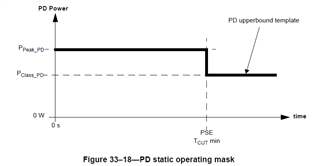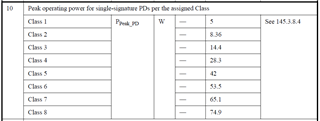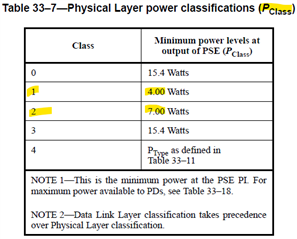Can you explain how IEEE 802.3at-2009 Class 1 and 2 power levels between PSE (Pclass) and PD (Ppeak_PD) can be compatible given Table 33-7 Pclass supply limits (4W and7W) are less than Table 33-18 Ppeak_PD consumption limits (5W and 8.36W)?
From a previous thread on this part number it seemed like there is a bit of a spec gap and that the PSE with limits at the minimum would remove power if Ppeak_PD is exercised, and systems need to consider this possibility. Is that true? Seems odd for an otherwise pretty thorough spec...










